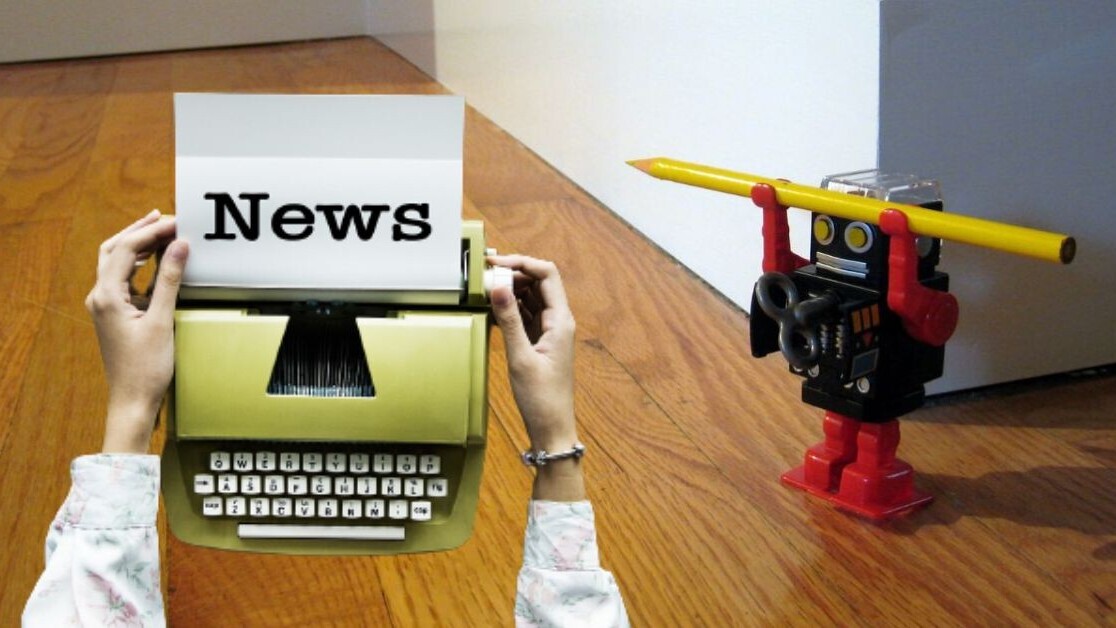
Generative AI is entering the media — and hacks are getting worried. Except for your loyal correspondents at TNW, of course, as automated output can’t compare with our flair and reporting. (At least, that’s what I’m telling my overlords.)
Other journalists, however, aren’t as blessed. Last week, the owner of Britain’s Daily Mirror and the Express became the latest media magnate to add bots to the newsroom.
The publisher, Reach, has posted several AI-written articles on the local news site In Your Area. According to Reach CEO Jim Mullen, they include a listicle on “7 things to do with visitors to show off Newport.”
“That is responsible use of AI.
Unsurprisingly, Mullen told human journalists they have no need to worry. He said his own reporters had suggested using the AI system — called Scribe — and that the tool would allow them “to focus on stuff that they want to do.”
“It was based off of content from our journalists, and the decision to run it was made by the editor: that is responsible use of AI,” Mullen added.
His words, however, are unlikely to allay the concerns of his employees. Reach, which owns hundreds of national, local, and online publications, was already planning extensive job cuts.
The company is far from the only media brand to bring AI to the pressroom. Here’s how other outlets are experimenting with automation.
The Associated Press
One of the earliest exponents of AI in reporting was the Associated Press (AP). In 2014, the company began automatically generating summaries of earnings reports.
A year later, AP said the system was producing around 3,000 of these stories every quarter — a tenfold increase over what AP reporters and editors created previously.
MSN
In 2020, Microsoft announced that it was replacing pesky humans in its news division with shiny AI. The workers had been curating and editing stories for the homepages of MSN and the Edge browser. The Cupertino company sacked the journalists despite warnings that substituting them for software was risky.
The warnings proved prescient: MSN went on to run a range of bogus stories. Highlights included Bigfoot sightings, Mermaid captures, and Grimes suing Elon Musk.
CNET
Tech site CNET was recently caught posting machine-written stories. The company never publicly announced the move, but came clean after an outcry from critics.
CNET described the initiative as a mere experiment. And like many experiments, the results were unpredictable.
The text generators were making “very dumb errors,” according to Futurism. CNET was forced to add lengthy corrections to some of the articles.
BuzzFeed
In January, the Wall Street Journal revealed that BuzzFeed will use AI to enhance its quizzes and personalise some content. The move came after another round of redundancies at the struggling publisher.
The initiative is a collaboration with ChatGPT creator OpenAI. In what will surely reassure BuzzFeed staff, ChatGPT recently claimed that AI “will never entirely replace human journalists.”
The Next Web
Much to my chagrin, even your favourite tech site has dabbled in AI-generated content. Most famously, our erstwhile colleague Satoshi Nakaboto produced automated reports on cryptocurrencies. Mercifully, the loathsome Nakaboto was laid off years ago.
More recently, AI has been producing images for the superlative TNW newsletter. Undoubtedly, this is a far more fitting role for automated media — but then, I would say that.
Get the TNW newsletter
Get the most important tech news in your inbox each week.




